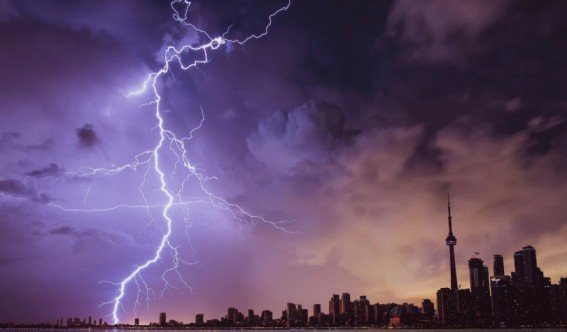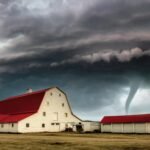
Introduction
Hurricanes are among the most devastating natural disasters, causing widespread destruction, electrical outages, and life-threatening floods. If you live in a storm-prone area, preparing in advance can mean the difference between safety and destruction. This comprehensive guide will run you through hurricane safety tips before, during, and after, while your preparation plan aligns with the latest expert recommendations from FEMA, NOAA, and the National Weather Service (NWS).
Table of Contents
Hurricane Preparation Checklist

Preparation is key to minimizing hurricane risks. Follow this checklist to stay safe and protect your property.
1. Know Your Hurricane Risk
Understanding your location’s risk level is crucial. Do you live near the coast or in a flood-prone area? Visit FEMA’s Flood Map Service Center to check your risk level.
2. Create a Family Emergency Plan
- Establish an evacuation plan with multiple routes.
- Set a communication strategy in case phone lines are down.
- Identify safe meeting locations in case of separation.
- Keep copies of important documents in a waterproof container.
3. Build a Hurricane Emergency Kit

Your emergency kit should contain at least 72 hours’ worth of supplies. Include:
- Non-perishable food & water (1 gallon per person/day for 3 days)
- Flashlights, batteries, & portable phone chargers
- First-aid kit and necessary medications
- Important documents (ID, insurance policies, medical records)
- Cash (ATMs may be down)
4. Review Homeowners or Renters Insurance
- Confirm that your home insurance covers hurricane damage.
- Consider flood insurance, as standard policies do not cover flooding.
- Take photos and videos of your home for insurance purposes.
5. Stay Informed with Weather Updates
- Monitor hurricane watches and warnings from NOAA’s National Hurricane Center.
- Download the FEMA app for real-time alerts.
- Keep a battery-powered NOAA Weather Radio in case of power loss.
Safety Tips for Hurricane Season

Once a hurricane warning is issued, take immediate precautions to protect your home and family.
6. Secure Your Home Before the Storm
- Install storm shutters or board up windows with marine plywood.
- Reinforce garage doors (they can collapse under high winds).
- Trim trees and remove loose outdoor objects that could become projectiles.
7. Evacuate if Ordered
- Do not wait until the last minute; roads will be congested.
- Follow local evacuation routes and avoid flooded areas.
- If sheltering at home, choose a small, windowless interior room on the lowest floor.
8. Stock Up on Fuel and Supplies
- Fill your gas tank early (gas stations run out quickly).
- Charge all devices and backup power sources.
- Stock up on emergency food and water supplies.
During the Hurricane: Storm Safety Tips

Once the hurricane arrives, staying inside and following safety measures is critical.
9. Stay Indoors & Away from Windows
- Take shelter in a small, interior room.
- Keep pets indoors and ensure their safety.
- Avoid floodwater, as it may be contaminated or electrified.
10. Listen to Emergency Broadcasts
- Stay tuned to NOAA Weather Radio or emergency broadcasts.
- Do not rely solely on mobile phones; power and signal may be lost.
11. Avoid Using Candles
- Opt for battery-powered lanterns or flashlights instead.
- Candles pose a fire hazard if left unattended.
After the Hurricane: What to Do Next

Even after the storm passes, dangers remain. Follow these safety precautions to avoid post-storm hazards.
12. Beware of Floodwaters and Downed Power Lines
- Avoid driving or walking in standing water (it may contain sewage or hide electrical wires).
- Do not touch downed power lines; report them to local authorities immediately.
13. Inspect Your Home for Damage
- Look for structural damage, gas leaks, and water intrusion.
- Take photos of damage before making repairs for insurance claims.
14. Use Generators Safely
- Never operate a generator indoors (risk of carbon monoxide poisoning).
- Place generators at least 20 feet away from doors and windows.
15. Seek Assistance if Needed
- Contact FEMA’s Disaster Assistance program if your home is uninhabitable.
- Check on neighbors, especially the elderly and disabled.
FAQs: Answering Your Hurricane Safety Questions
What to do after a hurricane?
- Avoid floodwaters, check for damage, document losses, and seek assistance from FEMA if needed.
What not to do during a hurricane?
- Do not go outside, open windows, or use electrical appliances if there’s flooding.
What are 5 safety precautions for a hurricane?
- Stay informed through weather updates.
- Secure your home and valuables.
- Evacuate if instructed.
- Stock up on emergency supplies.
- Avoid floodwaters and downed power lines.
What is the safest thing to do during a hurricane?
- Shelter in an interior, windowless room, stay informed and avoid dangerous areas.
How to survive a Category 5 hurricane?
- Evacuate if possible, seek reinforced shelter, prepare emergency supplies, and follow local authorities’ instructions.
What not to do if you are in a hurricane?
- Don’t ignore evacuation orders, don’t go outside, and don’t drive through floodwaters.
Is the bathroom the safest place in a hurricane?
- Yes, if it has no windows and is located in the home’s interior, it can be one of the safest places.
Final Thoughts
Hurricanes are unpredictable, but proper preparation can save lives. You can protect yourself and your loved ones by following these hurricane safety tips, creating a family emergency plan, and staying informed. Share this guide with family and friends to ensure everyone stays safe during hurricane season.
For more safety-related guides, check out our Fire Safety Tips and Safety Tips for Bike Riding to stay prepared for other emergencies.




